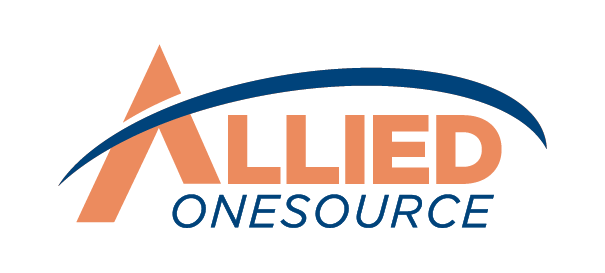Breaking Through Career Stagnation: 7 Practical Strategies to Reignite Professional Growth
Do you currently feel stuck? Or like your career is going nowhere, no matter how much effort you put in? If so, you’re not alone. According to Gallup’s State of the Global Workplace report, 54 percent of employees worldwide feel disengaged at work, with 27 percent feeling stuck.¹
For many, that sense of being stuck; doing the same thing every day without any excitement or growth results in frustration, lack of motivation, and even burnout.
But here’s the good news: feeling stagnant doesn’t mean you’re stuck forever. With the right steps and intentionality, you can reignite your professional growth and rediscover passion in your career. Let’s explore how.
Strategies to Overcome Career Stagnation
Here are a few tips to overcome career stagnation and reignite your passion for advancing your career.
1. Recognize When You’re Stuck
The first step in overcoming career stagnation is to recognize it. You may feel stuck, but how do you know when it’s time to do something about it? There are clear signs to identify what’s holding you back.
Reflect on your feelings over the past few weeks or months. Ask yourself:
- Do I wake up excited to work, or is it a struggle?
- When was the last time I felt challenged or proud of my work?
- Am I still learning, or do I feel like I’ve hit a plateau?
If you notice that the excitement and growth have waned, you’re likely experiencing stagnation. Feeling disengaged, lacking motivation, or noticing that colleagues are advancing while you remain in place are also common signs of career stagnation.
Research reveals that employees who feel stagnant are 3.5 times more likely to leave or lose their jobs within the next year.² Recognizing stagnation early allows you to create a plan for moving forward before it negatively impacts your career.
Read More: The Role of Resilience in Achieving Career Success
2. Reassess What You Want from Your Career
It’s natural for your professional aspirations to evolve over time, and what once excited you might no longer hold the same appeal. Changes in personal interests, family responsibilities, or even new aspirations can shift your goals. Taking the time to reflect on what you truly want can provide clarity and direction.
Ask yourself:
- What are my values today, and how do they align with my career?
- What do I want out of my work life—more flexibility, more work-life balance, more leadership, more pay or more purpose?
- What type of work makes me feel energized, satisfied and fulfilled?
- Which skills do I enjoy using most?
Reassessing your goals helps you identify whether you need a promotion, a new role, or even a career change altogether. It’s about aligning your work with what truly matters to you now to achieve greater job satisfaction and a solid path forward.
3. Invest in Your Professional Development
One of the most effective ways to reignite your career is by acquiring new skills that keep you relevant and competitive. If you're feeling stuck, it could be because your skill set isn’t aligned with the evolving demands of your field.
Industries are evolving rapidly, and to keep up, workers must continuously update their skills to remain competitive and engaged. 50 percent of employees will need reskilling by 2025, especially in sectors like customer service and IT.³ This illustrates a clear trend; if you're not learning and adapting, you risk falling behind and feeling stuck.
To build new skills and position yourself for new opportunities, focus on practical skills that apply directly to your job, such as improving communication, problem-solving, or technical proficiency. Soft skills like active listening, leadership, and emotional intelligence are also essential for growth.
For example, if you work in a call center, you could take a CRM software course to learn to analyze customer data and improve service strategies. This knowledge would boost your confidence and position you for a quality assurance or supervisory role.
Consider spending 30 minutes a day learning something new, whether it’s through online flexible courses on platforms like LinkedIn Learning and Coursera, reading industry blogs, or practicing new techniques. These small, consistent efforts of continuous learning can boost your confidence, get you out of your comfort zone, open doors to new opportunities, and prevent career stagnation.
Read More: Weighing Your Decision: 4 Key Factors Before Switching Jobs
4. Strengthen Your Professional Network
Many jobs are filled through networking today, so you can’t afford to neglect this when seeking opportunities for career advancement.
Networking helps you stay informed and visible in your industry and can lead to opportunities that aren’t listed publicly. Networking isn’t just about attending events—it’s about nurturing relationships that can provide guidance, mentorship, and referrals.
The key is consistency. Regularly reach out to your existing network—colleagues, mentors, former classmates, or clients. Share updates about your career interests and remain open to advice. You might be surprised at how many opportunities you might not find on jo boards arise simply from reconnecting.
At the same time, make a point to expand your network by attending industry events, participating in webinars, or joining relevant LinkedIn groups. These activities allow you to meet like-minded professionals who can share insights, advice, or even job leads.
Networking is about giving as much as receiving. Be generous with your knowledge, offer help when possible, and foster long-term relationships built on trust and mutual benefit.
5. Consider Lateral Moves for Fresh Challenges
Career growth isn’t always about promotions. Lateral moves—switching to a new position at the same level but with different responsibilities—can provide new challenges, broaden your skills, and reignite your passion. These moves can provide fresh growth opportunities without the pressure of immediately taking on a higher-level role.
For example, if you're an IT support technician feeling stuck with repetitive troubleshooting tasks, you could transition to a systems analyst role within the same company. Both positions require the same technical expertise, but the work dynamics and challenges differ.
To make a lateral move, speak with your manager or HR team about internal opportunities that align with your interests. A lateral move offers a way to diversify your experience and learn new skills, which can position you for future promotions or new career paths.
6. Use Feedback as a Growth Tool
Feedback is crucial to personal and professional growth. It helps you identify your strengths and areas for improvement, which are essential for advancing in your career.
Research shows individuals who receive regular feedback are found to be 3.5 times more likely to be engaged at work and perform at a higher level. Feedback offers specific insights into how you can improve your work and stay aligned with your career development.
To make feedback work for you, use the "3 Cs" which are:
- Collect feedback from different sources to get a complete view of your performance.
- Consider how the feedback fits into your current career path.
- Create an action plan to address the areas where you can improve.
If your manager suggests improving time management, implement changes such as using task management tools or setting clearer daily priorities. Regularly seek feedback, act on it, and commit to personal growth.
7. Seek Professional Career Guidance
You're not alone if you're still feeling stuck after trying these strategies. Career transitions can be challenging and complex for any professional. This is where expert guidance can make a difference.
Career coaches and staffing professionals can provide fresh perspectives on your career path, help you identify hidden opportunities, and offer insights into industry trends you might have missed. They can serve as objective sounding boards for your ideas while helping you navigate your next professional move.
They can help assess your strengths, identify potential career paths, and provide objective feedback on your professional goals. Additionally, they often have extensive networks and industry knowledge to help you make informed decisions about your next career move.
Ready to revitalize your professional journey?
Whether you're looking to change jobs or are stuck in your current role,
Allied OneSource
can help you find opportunities matching your skills and career aspirations.
Contact us today to explore your next career move!
References
1., 2. From Suffering to Thriving. (n.d.). In Gallup. 2023 State of the Global Report. https://www.gallup.com/workplace/349484/state-of-the-global-workplace.aspx
3. The Future of Jobs Report 2023. (2023). In The World Economic Forum. Retrieved November 27, 2024, from https://www.weforum.org/publications/the-future-of-jobs-report-2023/










